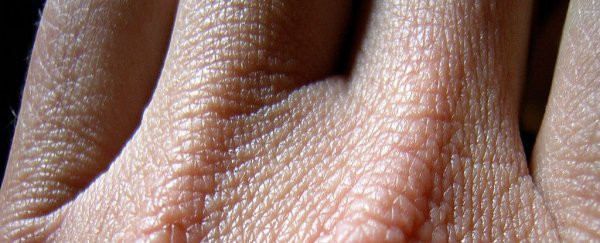Why does body fluids not leak through the skin?
One thing special about the skin is that it doesn't leak blood or sweat despite the fact that we eliminate about 500 million cells in 24 hours a day.
Somehow we completely replace the outer layer of the skin every two to four weeks, but it does not cause skin leaks or leaks. And now scientists say they have discovered the cause. The skin is formed from the unique arrangement of images called tetrakaidecahedrons , tetrakaidecahedrons never leave space even when individual cells are removed.
Reiko Tanaka, research member from the Royal College of London, said: "The study also helps us look at whether the cells that make up the skin can turn to a mechanism to play the role. The glue binds the cells together, ensuring that our skin maintains its integrity. "
Tanaka and her team decided to study the different layers that make up the epidermis in mammals - the membrane of the skin. Previous studies have shown that the epidermis in mammals has two main physical diaphragms in the top two layers of the epidermis.
Near the surface is a diaphragm of liquid air formed by the outer layer of the skin, called the horn layer and below is a liquid -liquid interface formed by very tight joints. Scientists have long studied the outer layers of the epidermis, which continuously releases dead skin cells and replace them with newer, healthier cells.

Skin eliminates millions of cells every day but does not allow blood or sweat to leak.(Photo: slminneman / Flickr).
The granulosum layer is very important to ensure that our skin does not leak, because it is the layer where tight joints are formed and the outer layer of the skin cannot form without it. Granulosum also plays a huge role in the process of excreting dead skin.
For mammals, to eliminate the outer layer of the skin, new skin cells must be constantly produced in the lowest layers of the epidermis before they move into the granulosum. Here, they replace the old skin cells, then push into the outer layer of the excreted epidermis.
So far, no one has been able to find out exactly how granulosum cells can be replaced without breaking the joints to ensure they don't leak body fluids everywhere.
Tanaka and his team used an imaging technology called focus microscopy to examine granulosum-level cells inside the ears of mice and found that the shape of these cells is very important for membrane types. the compartment they form.
While experiments were performed on rats, the epidermis in mammals was similar, especially in the deeper layers.
Researchers say corneocytes - a type of skin cell in the outermost layer of the epidermis in humans is more diverse in mice. The tetrakaidecahedron model still applies and can make a big difference in studying skin condition in humans.
The team said a deeper understanding of how the epidermis in mammals maintains close connections could explain the root causes of chronic skin diseases such as eczema and psoriasis. , common diseases but difficult to treat.
The researchers explain: "Problems in the production of junctions can be a contributing factor to why some people have eczema, where the skin barrier is weakened, leading to the penetration of bacteria, scratches and deep infections In other cases, failure in the diaphragm interlocking between cells - close connections - may partly explain why in psoriasis there is one excess of epidermal cells, causing thick patches of skin surface ".
The team is currently planning to determine the thickness of the skin in the epidermis and how to balance the growth and elimination of the cell to identify the source of errors or malfunctions.
- 500 million skin cells are excreted every day but why does blood, body fluids do not leak through the skin?
- 10 interesting things about human skin
- Diagnosis of the disease through the skin
- 'Planting' ... human skin in the laboratory
- Manufacture of drilling fluids from grapphenne materials
- The reason makes the skin rough like orange peel
- Successful treatment of leakage of ammonia gas on ISS station
- Remedy, treat chapped dry skin in winter
- You really have the ability to smell others' sick smells
- Poison leak - Bhopal tragedy
- As the largest organ and the one that helps us survive, how is the skin made up?
- New discovery about the secret of being young and not old
 Green tea cleans teeth better than mouthwash?
Green tea cleans teeth better than mouthwash? Death kiss: This is why you should not let anyone kiss your baby's lips
Death kiss: This is why you should not let anyone kiss your baby's lips What is salmonellosis?
What is salmonellosis? Caution should be exercised when using aloe vera through eating and drinking
Caution should be exercised when using aloe vera through eating and drinking